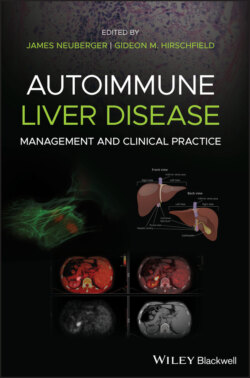Читать книгу Autoimmune Liver Disease - Группа авторов - Страница 61
HLA Risk Alleles
ОглавлениеThe strongest HLA‐associated risks for autoimmune diseases, including AIH and PSC, but not PBC, lie within the evolutionarily conserved 8.1 ancestral haplotype: HLA‐A1, Cw7, B8, TNFAB*a2b3, TNFN*S, C2*C, Bf*s, C4A*Q0, C4B*1, DRB1*03:01, DRB3*01:01, DQA1*05:01, DQB1*02:01 [2]. The extended 8.1 haplotype is the result of linkage disequilibrium, indicating an evolutionary advantage to sequestration of these alleles within class I, II and III HLA loci. These alleles are important for robust CD4 and CD8 T‐cell activation and generation of TNF‐α/β and C′ factors. The 8.1 haplotype is associated with AIH and PSC. Most Caucasians with HLA‐B8, DR3 have the 8.1 haplotype; however, recombinations have produced additional HLA‐DRB1*03:01 haplotypes associated with autoimmune diseases. It is notable that even healthy persons with the 8.1 haplotype exhibit an enhanced immunologic phenotype with autoantibodies, circulating immune complexes, activated T cells, and increased apoptosis of lymphocytes. The HLA‐DRB1 gene is of interest because it is the most polymorphic gene within the HLA class II region. Thus, it is not surprising that PBC is associated with the DR allele HLA‐DR8. Future studies are needed to define how different HLA alleles contribute to a break in tolerance and development of specific autoimmune diseases.
